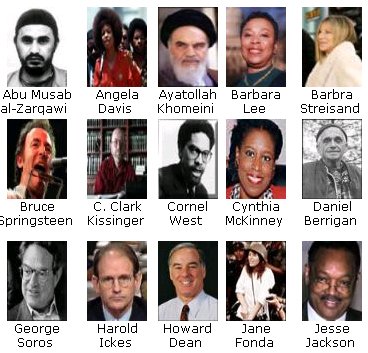Who the heck is Kurban Said?
Friday is my non-teaching day, so I went down to Montclair to check out what I think is the nearest used bookstore to my current apartment. It's called the
Montclair Book Center, and it turns out it's pretty good -- three floors, two storefronts, new and used books, and surprisingly well organized.
Among other things, I came across two novels by a writer I'd never heard of, Kurban Said. Reading through Paul Theroux's afterword to
Ali and Nino, I saw this:
But how had this Central Asian come to write his book in German and publish it in Berlin? Was he an exile, and if so, was this a pen name? It turns out that it was indeed a pen name, possibly shared by two people, one an Austrian baroness, Elfriede Ehrenfels, and the other an emigre Jew from Azerbaijan, Lev Nussimbaum, who had converted to Islam and taken the name Essad Bey and lived in Berlin and Vienna.
Ok, wow. Now that's a backstory! Elsewhere, Theroux makes it clear that he believes Nussimbaum is most probably the single author of the novel: "Mr. Reiss convincingly showed that Essad Bey -- that is, Lev Nussimbaum -- was the author of
Ali and Nino. The novel is so informative and self-consciously Asiatic that you know it could only have been written by a brilliant outsider observing the society from a distance, and you guess, an exile."
So the revelation might not be that dramatic. Lev Nussimbaum would likely have had many of the same life-experiences (albeit scaled down) as Kurban Said, the person he purported to be. And it probably wasn't at all unusual for Azerbaijani Jews to convert to Islam in the early 1900s.
But wait. There is in fact a
second afterward in the recent Anchor edition of
Ali and Nino that in some ways contradicts the first. This one is by someone named Heinz Barazon:
It was impossible for decades to identify the author behind the pseudonym, but it now seems clear that "Kurban Said" is a pseudonym for two different people-- a woman, the baroness Elfriede Ehrenfels, and a man Lev Nussimbaum. . . . Lev Nussimbaum--who possibly had the original idea for the novel--was Jewish, born in Baku [in Azerbaijan] in 1905. Nussimbaum's father took Lev and perhaps a German governess to Berlin during the tumult of the Russian Revolution. Nussimbaum completed his studies there, became a journalist and later wrote books about Mohammed, Nikolas II, Lenin, Reza Shah Pahlevi and regional geo-political issues. These books were published in London and New York under the name Essad Bey, the name he had taken in his youth when he converted to Islam. After Hitler seized power, Nussimbaum fled Berlin for still-independent Austria where an intense friendship with Baroness Elfriede Ehrenfels, her family, and her circle, developed. Ali and Nino is almost certainly result of this relationship. Which sections of the novel are the work of which author remains an unsolved mystery.
But wait, which version is correct -- Heinz Barazon's, or Paul Theroux's? Is "Kurban Said" simply the pen name for Lev Nussimbaum/Essad Bey, or is it a pseudonym that represents the work of
two people? Barazon's phrasing suggests he believes that Ehrenfels is the primary author of the book.
Theroux's support for Nussimbaum is based on research done by Tom Reiss, who wrote an article in
The New Yorker in 1999, and recently published a substantial book called
The Orientalist: Solving The Mystery of a Strange and Dangerous Life. Serendipitously, according to Amazon, it just came out a couple of weeks ago.
A quick Google search reveals an excerpt from
The Orientalist here (I highly recommend you read the whole thing). Reiss had in fact encountered the Heinz Barazon quoted above, an Austrian lawyer entrusted with managing Baroness Ehrenfels' estate, who originally (at least) strongly argued that the author of
Ali and Nino was the Baroness
only:
Barazon came directly to the point: the novel Ali and Nino was written by the Baroness Elfriede Ehrenfels von Bodmershof, the second wife of Leela's father, Baron Omar-Rolf von Ehrenfels, and when Baroness Elfriede died, in the early 1980s, having outlived her husband, all rights to the work had passed down to Leela.
Barazon produced a thick file of documents that backed up this story: publishing contracts, legal papers, and author lists from the late thirties, stamped with Nazi eagles and swastikas. Under the entry for "Said, Kurban" in the author's section of the 1935—39 Deutscher Gesamtkatalog–the Third Reich's equivalent of Books in Print–it said, in no uncertain terms, "pseudonym for Ehrenfels, v. Bodmershof, Elfriede, Baroness." The Nazi documents seemed to tell a clear story–that Baroness Elfriede had been Kurban Said–but it was one that I believed to be untrue.
I wouldn't be so impressed either: the Nazis probably wouldn't have allowed the publication of anything by anyone Jewish in 1937. The fact that only her name was on the books might have been an agreement worked out between the Baroness and Nussimbaum/Bey that enabled the work to be published at all. One question I still have is, how did Reiss (or someone) convince Barazon to soften his stance enough that he would later write an afterward to
Ali and Nino allowing for uncertainty as to the authorship of the novel?
Another question might be: if Nussimbaum had a successful career as an author in Berlin in the 1920s and 30s as Essad Bey, and if he wrote this novel, why not publish under
that name? Why Kurban Said? The new name makes the co-authorship thesis make a bit more sense.
But there's more. To solve the puzzle of Kurban Said, Reiss goes to Baku in Azerbaijan. Oddly -- and amazingly -- the Azerbaijanis have their own ideas about who wrote
Ali and Nino:
Educated Azeris I met seemed to consider it their national novel, telling me that they could show me the street, square, or schoolhouse where almost every scene had taken place. There was a resurgence of interest in the late 1990s in this small romantic novel from the late 1930s, though nobody seemed exactly sure why. I paid a call on an Iranian film producer who occupied a lavishly refurbished suite in a collapsing old mansion, and who explained to me his plans to make a movie of the book. (When the money didn't come through, he instead produced the Baku location scenes for a James Bond movie.) Another day I visited the National Literary Society, a Stalin-era building, where the chairman filled me in on the simmering dispute in Azeri academic and government circles over the novel's authorship. Kurban Said's identity had long been a subject of speculation, he explained, but fortunately, the issue had now been resolved: Kurban Said was the pseudonym for Josef Vezir, an Azeri author whose sons, the Veziroffs, had been very active in making sure his memory was preserved, and that he receive credit for Azerbaijan's national novel.
But when I got a copy of some short stories and novellas by Vezir, I was surprised that anyone could give this theory credence. Vezir was clearly an ardent Azeri nationalist whose novellas openly stated that ethnic and cultural mixing was a bad idea and a betrayal of the motherland. In Ali and Nino, Kurban Said offers nothing less than a passionate endorsement of ethnic, cultural, and religious mixing. The warmest passages in the novel describe the cosmopolitan Caucasus on the eve of the revolution–when a hundred races and all the major religious groups fought together only in battles of poetry in the marketplace–and the message seems to be that the separation of peoples is hideous and genocidal.
Man, this just doesn't stop.
This morning I read thirty pages of
Ali and Nino, which is fittingly a romance between a Muslim boy and a Christian girl. Also appropriately, the opening chapters are obsessed with a question of definition, though not of the identity of the protagonist but of Azerbaijan itself. Is it European or Oriental? As the character Professor Senin puts it to his students in the opening pages of the novel itself: "Some scholars look on the area south of the Caucasian mountains as belonging to Asia, while others, in view of Transcaucasia's cultural evolution, believe that this country should be considered part of Europe. It can therefore be said, my children, that it is partly your responsibility as to whether our town should belong to progressive Europe or reactionary Asia."
The uncertainty about the identity of Trans-Caucasia seems to mirror perfectly the uncertainty that now circles around "Kurban Said."



